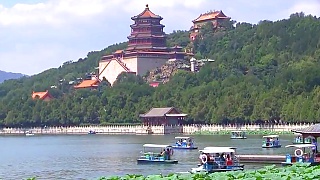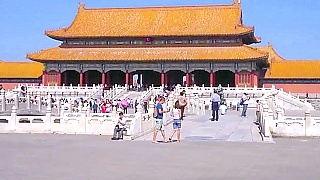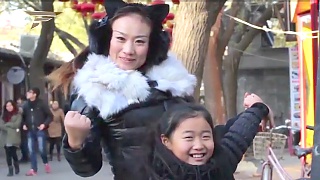Because China will not become another US slave state.
World domination has long been the intention of the US. Hundreds of coups and wars have shown this. So much of the world has been kept down by the US. And the intention re China is clear from all the MIC backed 'think tanks' (tanks to control your mind).
With Danny HaiPhong ...
[640],shadow=true,start=,stop=US puppet states (slaves) = the 'free world'. China's rising economy is about to 'collapse' (has been for for decades, they say).
With Scott Ritter - on how the transition to multi-polarity is as dangerous as it is welcome (and inevitable) ...
With Brian Berletic ...
[320],shadow=true,start=,stop= [320],shadow=true,start=,stop=Ben Norton on the NEW Cold War and Europe's economic suicide ...
[320],shadow=true,start=,stop=On the CIA, with Jeffrey Sachs ...
[320],shadow=true,start=,stop=On how the US government answers to special interests and not the people ("We lie, we cheat, we steal").
At root, it is win-lose trying to crush win-win. The US wants world dominion (and has for decades); while China seeks world development. Hopefully the slave nations are beginning to see the light on why they have been crushed for so long and will choose wisely. The world needs win-win.
With Cyrus Janssen and Reportify Media ...
[320],shadow=true,start=,stop=YT comments :
"When exposing a crime is treated as committing a crime, you are being ruled by criminals." ~ Edward Snowden.
"One of the best ways to achieve justice is to expose injustice" ~ Julian Assange.
"Truth-tellers are silenced, while the liars have their voices amplified."
[320],shadow=true,start=,stop= [320],shadow=true,start=,stop= [320],shadow=true,start=,stop= [320],shadow=true,start=,stop=With Brian Berletic ...
[320],shadow=true,start=,stop= [320],shadow=true,start=,stop= [320],shadow=true,start=,stop= [320],shadow=true,start=,stop= [320],shadow=true,start=,stop= [320],shadow=true,start=,stop= [320],shadow=true,start=,stop= [320],shadow=true,start=,stop= [320],shadow=true,start=,stop= [320],shadow=true,start=,stop= [320],shadow=true,start=,stop= [320],shadow=true,start=,stop= The US prepares for war on China
The US prepares for war on China
















































